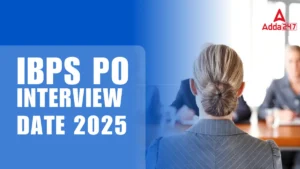Syllogism is one of the most important topics in the reasoning section of the IBPS RRB PO exam. Every year, questions from this topic are asked to test how well a candidate can understand statements and draw correct conclusions. These questions are based on logic and usually follow a fixed pattern. They involve statements and conclusions where candidates have to decide whether the conclusions logically follow from the given statements. To solve them quickly and accurately, one must understand basic rules, practice different patterns, and improve their reading and interpretation skills.
Syllogism Questions Asked in IBPS RRB PO Exam Last Year
In the IBPS RRB PO exam conducted last year, syllogism questions played a key role in testing the candidate’s reasoning abilities. These questions were not very lengthy but required proper attention and logical approach. They were asked in different forms like two-statement or three-statement problems with one or more conclusions. Solving such questions helps in scoring better and managing time in the exam. Below we have shared the actual syllogism questions that were asked in the previous year’s IBPS RRB PO exam to help you understand the pattern and difficulty level.
Question 1:
Statements:
All roses are flowers.
Some flowers are plants.
All plants are leaves.
Conclusions:
I. Some leaves are flowers.
II. Some roses are plants.
Options:
(a) Only I follows
(b) Only II follows
(c) Either I or II follows
(d) Neither I nor II follows
(e) Both I and II follow
Question 2:
Statements:
No bird is animal.
All animals are humans.
Some humans are tigers.
Conclusions:
I. No bird is human.
II. Some tigers are animals.
Options:
(a) Only I follows
(b) Only II follows
(c) Either I or II follows
(d) Neither I nor II follows
(e) Both I and II follow
Question 3:
Statements:
Some books are pens.
All pens are pencils.
No pencil is eraser.
Conclusions:
I. No pen is eraser.
II. Some books are not erasers.
Options:
(a) Only I follows
(b) Only II follows
(c) Either I or II follows
(d) Neither I nor II follows
(e) Both I and II follow
Question 4:
Statements:
All dogs are cats.
Some cats are lions.
No lion is tiger.
Conclusions:
I. Some cats are not tigers.
II. No dog is tiger.
Options:
(a) Only I follows
(b) Only II follows
(c) Either I or II follows
(d) Neither I nor II follows
(e) Both I and II follow
Question 5:
Statements:
All mobiles are laptops.
Some laptops are tablets.
All tablets are devices.
Conclusions:
I. Some laptops are devices.
II. All mobiles are devices.
Options:
(a) Only I follows
(b) Only II follows
(c) Either I or II follows
(d) Neither I nor II follows
(e) Both I and II follow
Question 6.
Statements:
Some pen are pencil.
Only pencil are eraser.
No pen are marker.
Conclusions:
I. Some eraser are not marker.
II. Some eraser are marker.
Options:
(a) If only conclusion I follows.
(b) If only conclusion II follows.
(c) If either conclusion I or II follows.
(d) If neither conclusion I nor II follows.
(e) If both conclusions I and II follow.
Question 7.
Statements:
Some book are not magazine.
Only a few magazine are newspaper.
All newspaper are journal.
Conclusions:
I. All newspaper are Magazine.
II. All newspaper being book is a possibility.
Options:
(a) If only conclusion I follows.
(b) If only conclusion II follows.
(c) If either conclusion I or II follows.
(d) If neither conclusion I nor II follows.
(e) If both conclusions I and II follow.
Question 8. Statements:
All chairs are black.
Only a few black are leather.
Only leather is brown.
Conclusions:
I. Some brown being chair is a possibility.
II. No black is brown.
Options:
(a) If only conclusion I follows
(b) If only conclusion II follows
(c) If either conclusion I or II follows
(d) If neither conclusion I nor II follows
(e) If both conclusion I and II follow
Question 9. Statements:
No tower is wave.
All wave is green.
Only a few green are plant.
Conclusions:
I. No wave is plant.
II. Some plant is not tower.
Options:
(a) If only conclusion I follows
(b) If only conclusion II follows
(c) If either conclusion I or II follows
(d) If neither conclusion I nor II follows
(e) If both conclusion I and II follow
Question 10
All pens are blue.
Some blue are shiny.
Only shiny are expensive.
Conclusions:
I. Some expensive things can be pens.
II. No blue thing is expensive.
(a) If only conclusion I follows
(b) If only conclusion II follows
(c) If either conclusion I or II follows
(d) If neither conclusion I nor II follows
(e) If both conclusions I and II follow
| Related Posts | |
| IBPS RRB Previous Year Papers | IBPS RRB PO Eligibility |
| IBPS RRB PO Salary | IBPS RRB PO Cut Off |
| IBPS RRB PO Syllabus | Seating Arrangement and Puzzles Asked in IBPS RRB PO Exam Last Year |




 IBPS PO Document Uploading Link 2025 Act...
IBPS PO Document Uploading Link 2025 Act...
 IBPS PO Interview Date 2025 Out, Check I...
IBPS PO Interview Date 2025 Out, Check I...
 Daily Current Affairs Quiz 2025 10 Decem...
Daily Current Affairs Quiz 2025 10 Decem...







